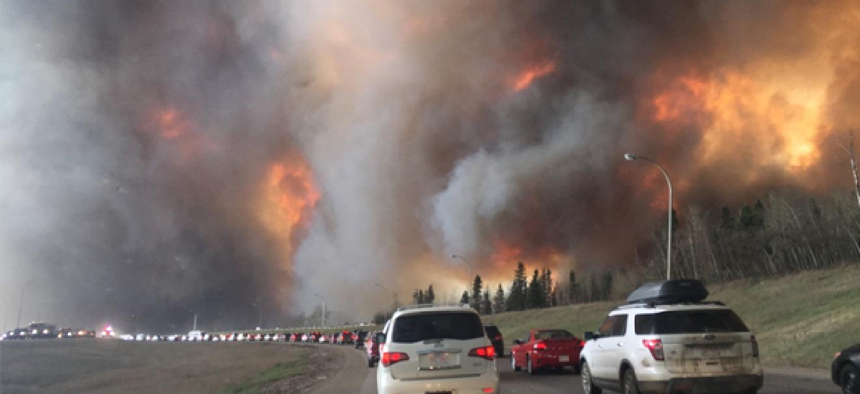Using Twitter to predict wildfires' air quality impact


Connecting state and local government leaders
Social media can be an inexpensive complementary data source for evaluating the effects of wildfires, researchers with the U.S. Forest Service say.
Social media activity can be used as a predictor for air quality during a wildfire, according to a new study from the U.S. Forest Service.
Two researchers, Sonya Sachdeva and Sarah McCaffrey, studied what people in California were posting on Twitter during the 2015 wildfire season to see if there was any correlation with ground sensor readings from the Environmental Protection Agency's AirData air quality database.
They analyzed 39,000 tweets along with corresponding geographical information sent between June 1 and Oct. 31 of 2015. The tweets were selected based on phrases and hashtags, including wildfire names, and then placed into 50 categories such as firefighting activity, air quality and smoke and efforts to help or donate to relief efforts.
The researchers found that while the tweets overall were not a good predictor of air quality, those tweets mentioning air quality and smoke became a good indicator of the impact of air quality on people in the area.
“Social media may be a complementary data source to currently existing air quality data, which are often limited by the location of physical monitoring stations,” the paper said. The inexpensive access to the data may also be appealing to land managers and emergency responders on limited budgets or those in remote areas that lack other types of air quality assessment tools.
Although this kind of analysis may raise privacy concerns, the researchers said they took steps to remove personally identifiable information from their analysis, and the aggregation of tweets further anomomizes the data.
“These results suggest that our model can be expanded beyond being a predictive tool for air quality impacts to a tool that connects people willing to help with those that require assistance,” the researchers concluded. “This could be a crucial need as wildfires increase in the coming years and budgets across management agencies are stretched thinner.”

NEXT STORY: Privacy Concerns Raised With Connecticut’s $10 Million Electronic Tolling Study




